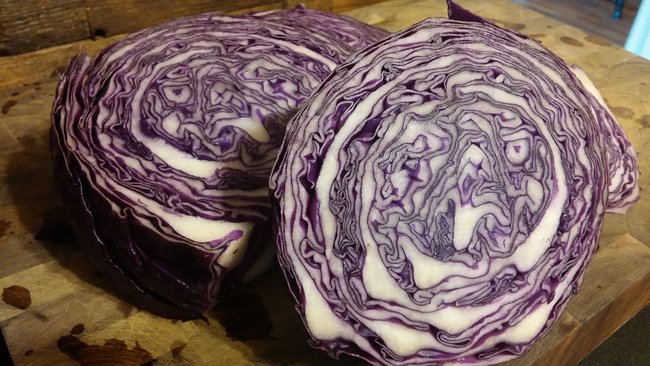When I was a kid, the entirety of my sauerkraut experience came from my granny who would cut up hotdogs and warm them in a pan with canned kraut. While it wasn’t exactly gourmet, it did satisfy my love of sour food.

As an adult, my tastes are a little more refined, but I’ve not lost my love for sour flavor. I generally have some kind of pickle or fermented food with my meals, including pickled peppers, kimchee or kraut. In the winter, I’m particularly fond of sauerkraut, because cabbage is affordable at this time of year. There are significant health benefits to real, fermented kraut.
Sauerkraut was first created as a way to prevent scurvy in sailors who were at sea for months at a time. Fermented cabbage stores well and, while the levels of vitamin C are decent in fresh cabbage, fermented cabbage has significantly higher levels of this vital vitamin. Scurvy is no longer a problem, but we do want to keep our body’s immune system healthy during winter.
Don’t be afraid of the fermentation process. It seems a little scary, but with only two ingredients, this fermented red sauerkraut recipe is a great way to get started.

FERMENTED RED SAUERKRAUT
Ingredients:
1 medium to large head of cabbage
1 tablespoon of salt
Instructions:
1. Dice the cabbage into ½ inch squares, discarding the stem.
2. Place the chopped cabbage into a large bowl and add the salt.
3. Mix the cabbage for 5 minutes.
4. Allow the mixture to rest for at least 5 minutes.
5. Mix again for 5 more minutes. After the period of rest, the cabbage leaves will start releasing their juices, and the leaves will begin to wilt. Cabbage juice will start to pool in the bottom of the bowl. Do not skimp on the mixing and resting times. They are vital to getting enough juice from the cabbage.
6. Pack the wilted cabbage into a quart jar (yes, the whole head of cabbage will only fill a quart.), pressing down with a wooden spoon or a firm plastic spoon. You’re going to be pressing hard, so use something that won’t break. The goal is to completely submerge the cabbage in its juice.
7. Once the jar is packed, fill a plastic sandwich bag halfway with water. Place the bag in the mouth of the jar and secure it with a rubber band. This weighs the cabbage down, so it stays covered with juice during the entire fermentation process while allowing air created by the growing beneficial bacteria to escape. Don’t put a lid on the jar unless you enjoy cleaning half-fermented red cabbage juice from your floors and walls. Too much pressure will build up in a sealed jar causing it to explode.
8. Sit the jar in a bowl and allow it to ferment in an area without direct light. During a particularly active part of the fermentation process, the juice may spill over the edge of the jar. Make sure it’s sitting in something to catch the overflow.
9. Allow the kraut to ferment for at least three weeks. Fermentation times vary depending on temperature. If your house stays below 70°, it may take longer to get a good sour flavor. Taste the kraut with a clean utensil after three weeks. If it isn’t sour, try it once a week each week until it reaches the desired flavor.
 Tiffany Selvey is a Master Gardener who writes about her passion for growing, cooking and living naturally. When she’s not elbow deep in soil, she enjoys raising a very active son, laughing with her husband, and wrangling their pets.
Tiffany Selvey is a Master Gardener who writes about her passion for growing, cooking and living naturally. When she’s not elbow deep in soil, she enjoys raising a very active son, laughing with her husband, and wrangling their pets.
